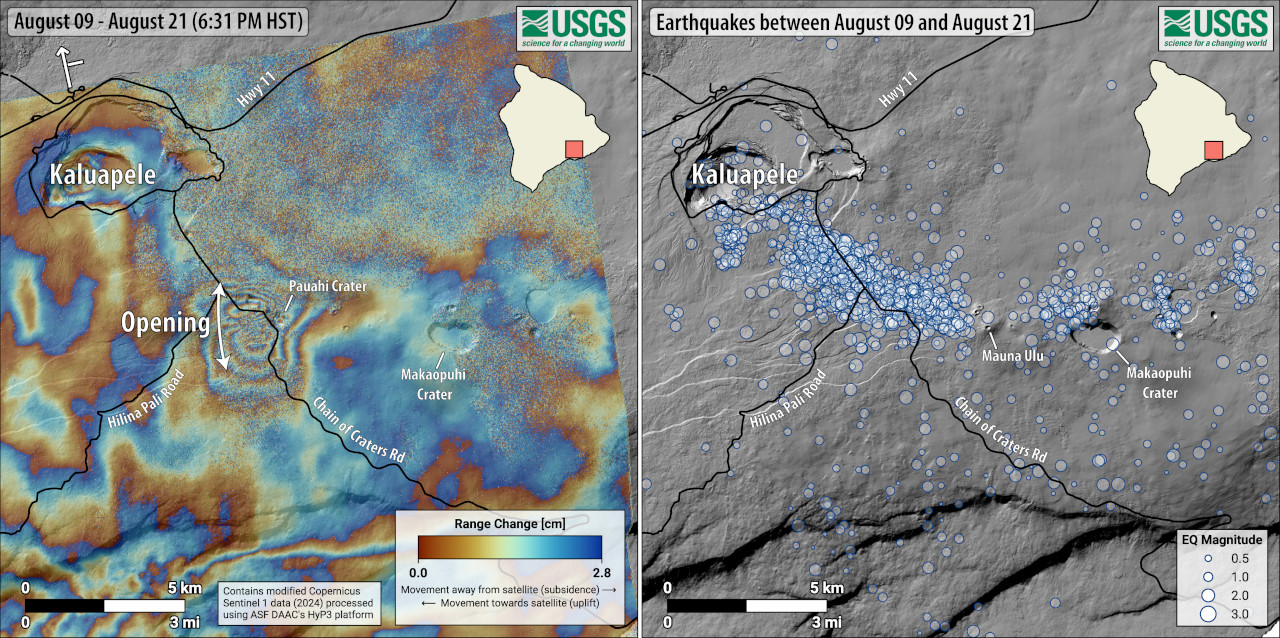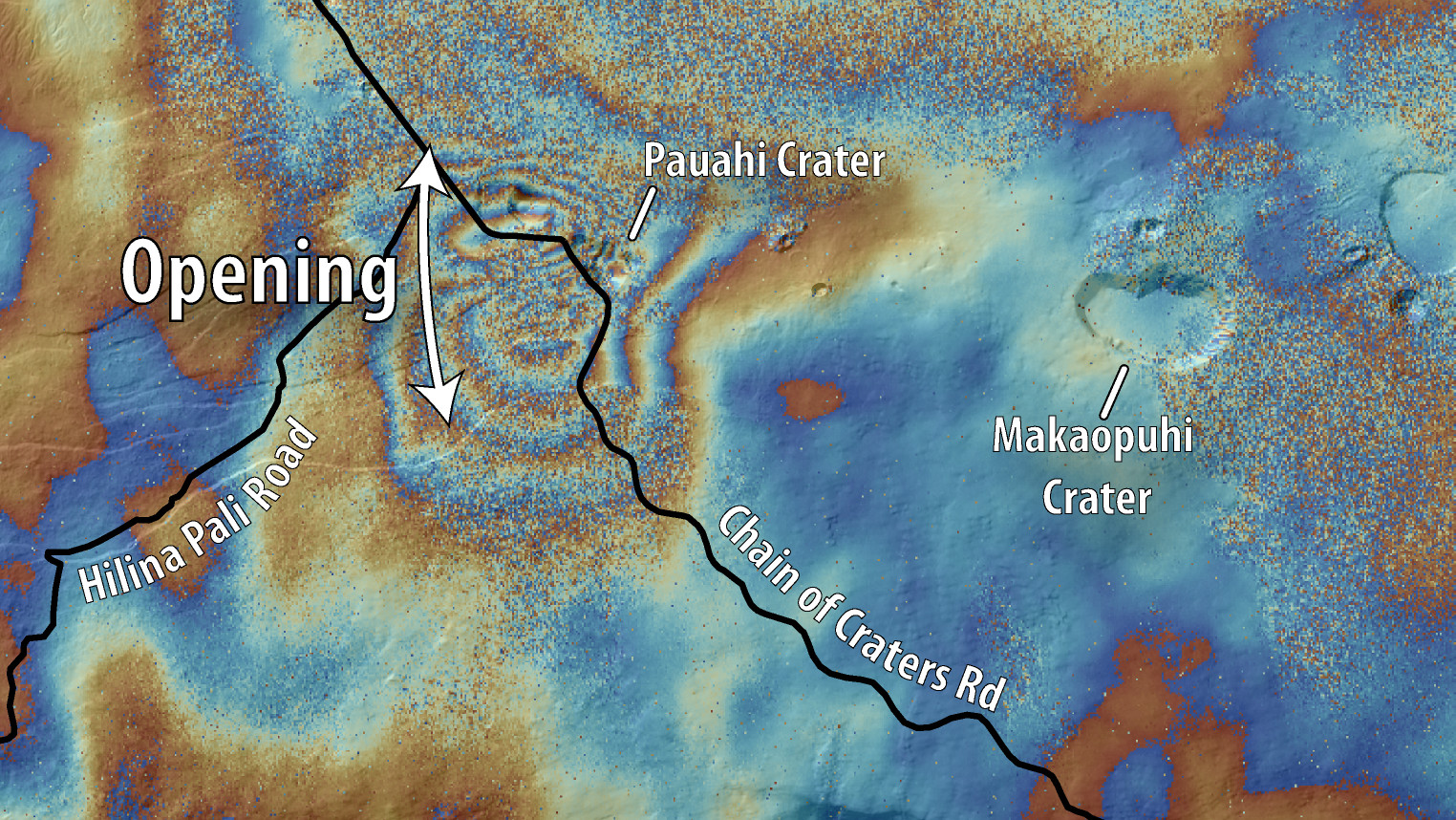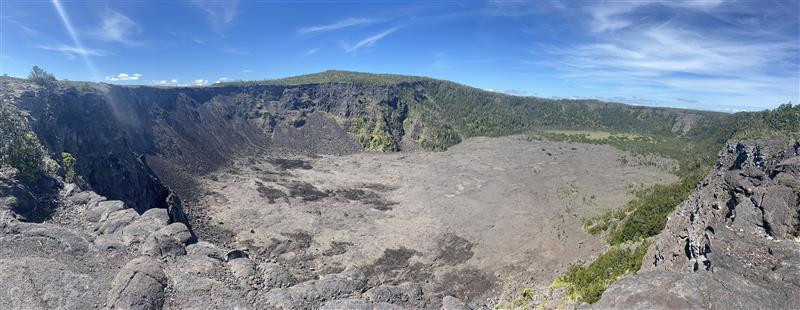(BIVN) – Kīlauea volcano is not erupting, although there appears to be another magma intrusion on the upper to middle East Rift Zone, which is ongoing as of Sunday evening.
In the latest USGS Volcano Watch article, scientists wrote about how these recent intrusions follow a pattern of previous events.
The article was written by the USGS Hawaiian Volcano Observatory before the latest intrusion, the start of which coincided with a magnitude-4.3 earthquake early Saturday evening. The following swarm of earthquakes and deformation suggested that “a dike was emplaced in the region just northwest of Makaopuhi Crater.”
“The current intrusive activity represents the furthest eastward shallow intrusive activity with deeper activity occurring between Makaopuhi Crater and Puʻuʻōʻō during the past month,” scientists wrote on Sunday.
From the latest Volcano Watch article, written by HVO geophysicist Ingrid Johanson a few days before the latest intrusion:
Since July 2024 activity, at Kīlauea has been punctuated by two periods of intense unrest, centered on the upper East Rift Zone (ERZ). The periods included hundreds of earthquakes per day and high rates of tilting in the upper ERZ. Monitoring data have shown that the unrest was the result of two intrusions into a region of the ERZ between Pauahi and Makaopuhi Craters.
ABOVE: A panoramic photograph of Makaopuhi Crater on the middle East Rift Zone of Kīlauea. Makapohi Crater is located between Maunaulu and Puʻuʻōʻō, two lava shields that formed during long-lived (years) eruptions on the middle East Rift Zone. Kānenuiohamo, which is visible in the background of this photo, is another long-lived lava shield on the middle East Rift Zone that formed at least several hundred years ago. (USGS photograph by K. Mulliken)
This is not the first time these areas have experienced intrusions, two similar events occurred in 2007 and 2011, during the era of the Puʻuʻōʻō eruption. An intrusion is an injection of magma into rock, that causes ground deformation and seismicity but does not result in an eruption.
The 2007 Father’s Day intrusion occurred in the ERZ, in a very similar location to the recent intrusions. In fact, the Father’s Day event included a very small eruption; but the majority of the magma transferred into the ERZ did not erupt, so it is more often remembered as an intrusion. This event did not fundamentally change the eruptive vent at Puʻuʻōʻō, which had been erupting since 1983; and kept doing so until 2018.
In 2011, the Kamoamoa eruption occurred, also on the ERZ and geographically in between where the Father’s Day intrusion happened and Puʻuʻōʻō, which was the active vent on the ERZ at the time. Kīlauea was also erupting in the form of a lava lake in Halemaʻumaʻu crater at the summit. Although the level of lava in the summit lake lowered due to the 2011 intrusion, the event did not dramatically alter the location or style of eruptions from Kīlauea.
A couple things have changed since the last events on this part of the ERZ. Puʻuʻōʻō is no longer erupting; and much of the magma that had been stored in the rift was emptied out during the 2018 lower ERZ eruption. This means the rift is not as full as it was during the 2007 and 2011 eruptions. There has also been a vocabulary change for how we talk about this part of the rift.
Previously, the ERZ was divided into upper, middle, and lower sections. The “upper” section or UERZ is the segment that bends to the north and intersects with the caldera. The UERZ is unique in that there has not been measurable spreading across the rift. Instead, opening occurs on faults oriented at angles similar to the rift trace (generally, west-east trending); consistent with the direction of opening in the middle and lower ERZ. Because of this, USGS Hawaiian Volcano Observatory (HVO) scientist Don Swanson suggested referring to the upper section as the “East Rift Connector,” because it connects the “proper” east-trending part of the ERZ to the caldera. These days, you might see either term used, though they refer to the same structure.
On July 22, 2024, a seismic swarm on the UERZ heralded a shift in activity away from the southern Kīlauea caldera region. The seismicity and deformation indicated that magma was pushing open an underground crack, oriented at an angle to the connector, but parallel to the main rift. That is, in a similar direction to the 2007 and 2011 events.
Again, on August 20, seismicity in the UERZ and deformation again indicated an intrusion into a crack oriented at an angle to the UERZ but parallel to the main rift, but this time slightly to the north of the July intrusion.

USGS: “The map on the left shows recent deformation at Kīlauea over the timeframe of August 9–21, 2024. Data were acquired by the European Space Agency’s Sentinel-1A satellite. Colored fringes denote areas of ground deformation, with more fringes indicating more deformation. The butterfly-shaped feature near Pauahi Crater on the upper East Rift Zone indicates ground surface motion over this time period and arrows labeled “opening” indicate the direction of crack opening as magma intruded underground. A similar map for the July intrusion can be found on the HVO maps page. The map on the right shows earthquakes over the same timeframe, August 9–21, 2024.”
These intrusions have been accompanied by steady inflation of the middle ERZ that is ongoing as of September 2024. The center of inflation has moved around, indicating that the storage structure of the rift is not simple. However, all the locations have been up rift of Puʻuʻōʻō; so far, there has not been evidence of significant amounts of magma traveling past Puʻuʻōʻō and further down the rift.
Given that the 2007 and 2011 intrusions had a limited effect on the Puʻuʻōʻō eruption, it is not clear what these recent events might indicate for the future. However, following the 2018 eruptions, HVO worked to build out our monitoring instrument coverage on Kīlauea’s ERZ, into areas that had previously been part of the active Puʻuʻōʻō flow field. We will continue to monitor these instruments closely for any sign of magma migration.



by Big Island Video News7:14 pm
on at
STORY SUMMARY
ISLAND OF HAWAIʻI - Scientists examine the patterns of intense unrest on the upper East Rift Zone between Pauahi and Makaopuhi Craters.